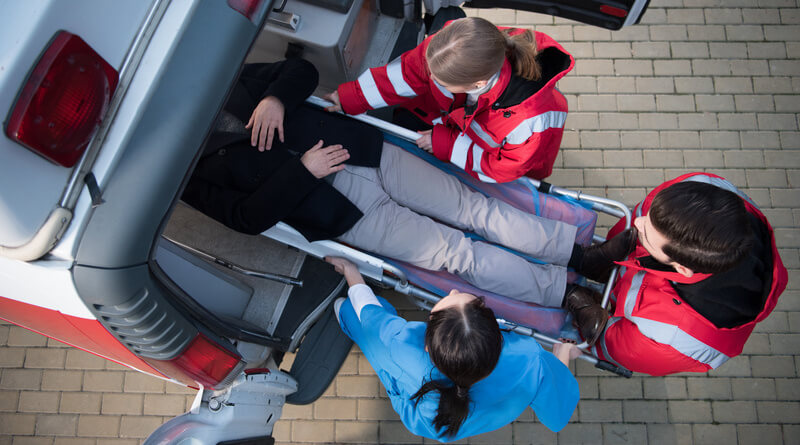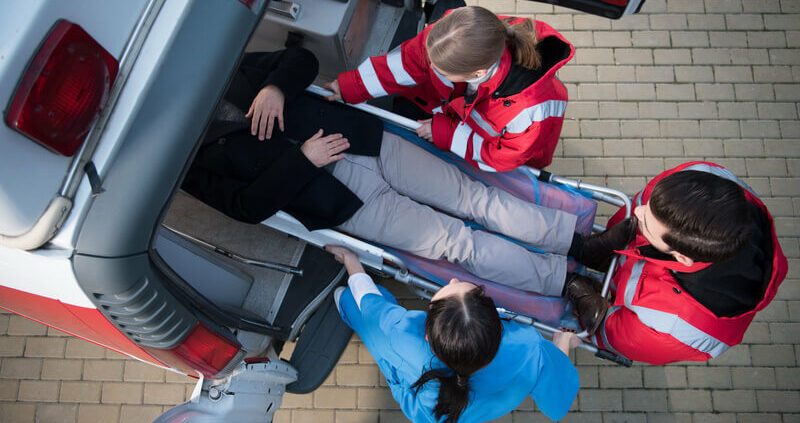5 Tools and Tips for Safely Transporting Patients

The following guest post on patient safety in healthcare was submitted by Dixie Somers.
Patient transportation is a key component of most hospital care, and if you are in any role in the hospital that brings you into direct patient contact, you will have a part in this vital event as well. Whether you are the unit clerk inputting transport orders or the registered nurse who prepares the patient for transport, you are responsible for the safety and the comfort of the patient. Consider these five tips that will help you safely transport patients between rooms and floors.

Learn more about 5 practical tips to increase patient safety during transportation.
Use a “Ticket to Ride”
A “ticket to ride” is a piece of paper that goes with the patient as he or she is transported to a different area of the hospital. It keeps your patient safe by providing transport personnel as well as personnel in the unit to which the patient is going with pertinent patient information. Information that should be included would be patient name, allergies, procedure to be performed, safety risks and information about mobility.
Correctly Identify the Patient
Before a patient is transported, he or she should be correctly identified to the transport personnel using at least two pieces of pertinent data, such as name and birth date. Not knowing their medical history is dangerous for unidentified patients, so it’s important to use a technology like biometrics to verify their identity if they are unconscious. Fortunately, RightPatient can help with patient identification – it has been correctly identifying patients for years.
Bring Appropriate Equipment
Depending on the patient, certain equipment may be needed for safe transportation. For example, you may need to gather a wheelchair or a stretcher. You may also need to ensure that an IV pole, oxygen tank or heart monitor accompanies the patient. Keep the patient safe at all times by locking devices when they are in a stopped position and by keeping side rails up on stretchers.
Nitrile Gloves
For many years latex had been the chosen material for hand gloves used for medical and surgical procedures as well as for various industrial use. Also known as examination gloves that are disposable type, these gloves protect the hand, especially during surgery and other medical examination. With the rise in HIV across the world, the demand for hand gloves increased
exponentially as these became necessary for daily applications. Latex gloves proved quite costly, and there came a time when nitrile gloves proved to be more affordable and as effective as latex gloves and soon became the primary choice. While latex is pure rubber, nitrile is a synthetically derived product from latex that goes by the name NBR or acrylonitrile butadiene rubber. It has high chemical resistant property, highly durable, and does not tear easily.
Using Transfer Boards or Rollers for Bed-Ridden Patients
A transfer board or roller will take a great deal of the weight out of the patient when you are moving them from one bed to a stretcher for transportation. Be sure to maintain the patient’s dignity at all times by using gowns and blankets and by closing the door or curtain to the patient’s room. Always have at least two people to help a mobile patient get out of bed and at least four people to help move an immobile patient from one bed to a stretcher. If you do not have adequate staff for transport and you injure your back, meet with a personal injury attorney who can help you recoup your financial losses for physical and emotional trauma.
Incorporate Gait Belts for Mobile Patients
Patients who are able to walk should still be secured using a gait belt placed comfortably yet snugly below the armpits. The gait belt will ensure that the patient does not fall while walking down a hallway. It is important to use the belt even if the patient is holding onto a walker because hospital hallways can be slippery.
With the incidence of patient identification errors on the rise today, you must be sure that you are transporting the correct patient and that you are doing so safely. In fact, up to 10% of patients are misidentified in hospital records and around 6% of these individuals experience negative health consequences. Be sure that you are part of the cure for your patients by using these tips to keep them comfortable and secure during hospital transportation.
Dixie Somers is a freelance writer and blogger from Phoenix, Arizona, who loves most to write for health, technology, and business niches. Dixie is the proud mother of three beautiful girls and wife to a wonderful husband.









I agree with what you said that a private ambulance must bring the appropriate equipment needed for the certain patient they are transporting to ensure their safety. My mom plans to hire a private ambulance to transport her grandma Elaine to a hospital that’s two hours away from our house. I’ll share this article of yours with my mom to use as a checklist for the private ambulance she’s hiring. Thanks.